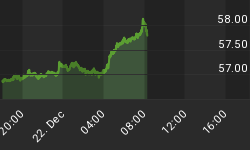On Friday, expect to see the BLS revise job creation estimates down by a whopping 824,000 jobs. The culprit, as I have been harping on for a couple years is a birth-death model far out of sync with reality.
Bloomberg has some nice interactive charts in an article Birth Death Model Insights.
Originally the BLS said 4.8 million jobs were lost between April 2008 and March 2009.
This is what it looks like now.

Birth Death Model Falls Out Of Bed

The labor department says there are flaws in its model but defends the process and says "no changes to the current modeling technique are scheduled at this time." Please note that the birth death model has added 990,000 jobs since April. Those jobs are not reflected in the upcoming 824,000 revision.

Jobs Contract 24 Straight Months
Here is a snip from my post Jobs Contract 24th Straight Month; Unemployment Rate Stays At 10.0%
Birth Death Model Revisions 2008

Birth Death Model Revisions 2009

Birth/Death Model Revisions
At this point in the cycle Birth/Death Model numbers should have been massively contracting for months. The BLS is going to keep adding jobs through the entire recession.
Please note that one cannot subtract or add birth death revisions to the reported totals and get a meaningful answer. One set of numbers is seasonally adjusted the other is not. In the black box the BLS combines the two coming out with a total. The Birth Death numbers influence the overall totals but the math is not as simple as it appears and the effect is nowhere near as big as it might logically appear at first glance.
BLS Black Box
For those unfamiliar with the birth/death model, monthly jobs adjustments are made by the BLS based on economic assumptions about the birth and death of businesses (not individuals). Those assumptions are made according to estimates of where the BLS thinks we are in the economic cycle.
The BLS has admitted however, that their model will be wrong at economic turning points. And there is no doubt we are long past an economic turning point.
Here is the pertinent snip from the BLS on Birth/Death Methodology.
- The net birth/death model component figures are unique to each month and exhibit a seasonal pattern that can result in negative adjustments in some months. These models do not attempt to correct for any other potential error sources in the CES estimates such as sampling error or design limitations.
- Note that the net birth/death figures are not seasonally adjusted, and are applied to not seasonally adjusted monthly employment links to determine the final estimate.
- The most significant potential drawback to this or any model-based approach is that time series modeling assumes a predictable continuation of historical patterns and relationships and therefore is likely to have some difficulty producing reliable estimates at economic turning points or during periods when there are sudden changes in trend.
The BLS is stuck and does not know how to fix its model.
Some will point out that the string of job loss months ended November of 2009. I dispute that. More revisions are surely coming for April 2009 through December of 2009 and beyond.















